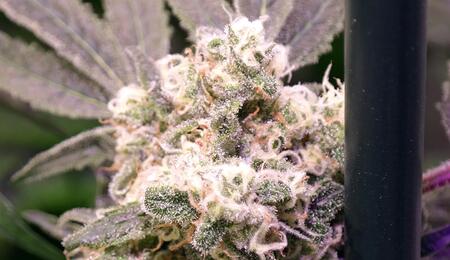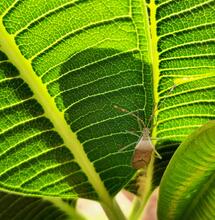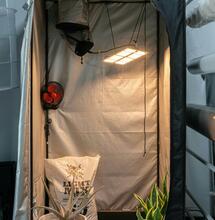Water and plants

Water is imperative to so many plants’ functions, that without it, there would be no plants. 70-80% of fresh plants’ weight is made up by water, and it plays a key role in their various metabolic reactions, including photosynthesis. However, up to 98% of absorbed water is transpired back into the atmosphere. In this article, you will learn how plants work with water and to influence the water regime during growing. Water is fundamental for the transport of substances in plant organism. It dissolves nutrients and transports them to places where plants need them. It can also cool down the plant in case it is necessary, or prevent its temperature from going down rapidly. In summary, water has thermoregulatory function, which can be used by growers as an excellent way to increase CO2 presence. In an ideal scenario, water flows continuously inside the plant from the roots up to the leaves, where it leaves the plant and is released into the atmosphere in the form of vapor. It would not be possible without significant surface tension of water, enabling capillary elevation, transpiration and root buoyancy.
Water intake
Cannabis plants absorb water via their root system, mostly through thin hairs on the surface of the roots called root hairs. They are visible to the naked eye – and the best time to observe them is when germinating seeds on germinating paper. If you want the roots to receive the necessary amount of water, you need to create optimal conditions for them – this means achieving the right temperature and providing enough oxygen. If the temperature is too low or too high in the root region, the water uptake capacity decreases. With extreme temperatures the capacity is blocked completely. With cannabis, the ideal temperature in this area is around 21 °C. Above-ground parts of plants thrive best at daily temperatures around 25-28 °C. Therefore it is necessary from time to time to lower the temperature in the root area. This typically happens when growing in cultivation systems where only a small amount of growing medium is used, such as aeroponics or some hydroponic systems. The nutrient solution can heat up to about 25 °C in such cultivation environment and needs be cooled to the optimum temperature. Nonetheless, since growing in these systems allows for excellent availability of oxygen, the cost of cooling is definitely worthwhile.
Healthy roots are essential for proper water regime and plentiful harvest. Cannabis plant can develop a very rich root system under ideal conditions. Overwatered plants or root pests can rapidly lower the ability of roots to absorb water and thereby transfer nutrients to aboveground parts of your plants.
Osmosis in plant cells.
Water distribution throughout the plant
Water and nutrient reach other parts of the plant through the root system. Two physical phenomena have impact on its speed – diffusion and osmosis. Diffusion means that particles from places with higher-concentration move spontaneously to places with lower-concentration and are replaced by water in the original location. What happens here is spontaneous equal distribution of particles in water. Try to imagine your plant as a vase. If you place the nutrients in a soluble form on the bottom and pour water into the vase, thanks to diffusion the concentration of nutrients would be the same in all parts of the vase. Nutrients would rise up and water would go down. However, this is only theory; in practice diffusion is effective only for a very short distance up to about one centimeter. It means that, under real conditions, the same nutrient concentration would be only in a short distance from the original nutrient location. Consider this example only as an illustration of diffusion.
Osmosis is a process similar to diffusion, but there is a new player called semipermeable membrane, which permeates water, but particles do not pass through it. It means that if you place a semi-permeable membrane on the nutrients from the previous example and then pour water into the vase, the results would be much different. Yes, water molecules would penetrate the membrane into environment with nutrients, but the nutrient particles could not move in the opposite direction. Consequently, there would be an increase in the volume and dilution of the solution under the membrane, as well as certain loss of water. However, there would no nutrient enrichment of the water above the membrane. To a certain extent, plant cells form an osmotic system with a fully permeable cell wall and a semipermeable plasma membrane and cytoplasm. The plasma membrane permeates the water into the vacuole where the cell juice is concentrated. The vacuole is getting bigger and pushes the cell walls. This pressure is named turgor. If the vacuole is fully saturated with water, the plant has the necessary compactness. If the turgor lowers, the stalks and leaves weaken and the plant begins to wither.
In the above-mentioned case, osmosis works to the benefit of the plants and to the joy of the grower. But it can also do quite the opposite. Cells are receiving water provided its internal environment contains a higher concentration of substances than the external environment. Otherwise, water will flow out of the cell and a process called plasmolysis would occur, which means shrinking of the protoplast and its separation from the cell wall. Should a situation like this arise, i.e. with a high mineral salt content in the growing medium, then the concentrated environment would significantly slow the absorption of water and rather drain it from the plant instead.
Majority of water is absorbed through root hair.
Transpiration
To transport water over longer distances, cannabis uses blood vessels and catheters. From the roots, water enters the vessels of the stem and branches until it reaches the leaves. Here it leaves for the atmosphere. It is a transpiration stream, which is caused, in addition to the above mentioned surface tension of water, mainly by transpiration, which is evaporation of water from plant parts above the ground, and partly by root buoyancy. Despite the fact that transpiration is an essential mechanism for any plant, it does not cost any energy, since evaporation of water is the result of exposure to sunlight. Water can leave the plants through their epidermis (cuticular transpiration). Plants cannot control this “leak” in any way. However, most of the water leaves through special vents – stomata. We are talking about stomatal transpiration, which can be controlled by the plant by opening and closing the stomata.
Stomata are the ventilating tissues of plants. In cannabis and other dicotyledonous plants, we can find them mainly on the underside of leaves. Because of their size of 0.02-0.03 mm, you will not see them with naked eye. Despite the fact they are so small, even when fully opened, they cover approximately one percent of the plant's surface, and more than 90% of absorbed water leaves the plant this way. Stomata are formed by dividing one cell into two guard cells between which a pore is formed. The opening and closing of the stomata depends primarily on the water content of the guard cells. Once the vacuoles of cells are filled with water, the stomata opens. Similarly, when the amount of water decreases, the stomata closes. But that’s not all, opening and closing of the stomata is also influenced by many other factors – potassium cation concentration, light, etc. Indeed, it is a very complicated process.
Transpiration speed depends, among other things, on the difference in water vapor pressure inside leaves and in the surrounding environment (VPD). Inside the leaf, there is always 100% humidity and the water is present in liquid form. Before transpiration into the atmosphere, the water under the leaf surface turns into steam. This creates above mentioned pressure because the steam requires much more space than water. The level of the water vapor pressure inside the leaf also depends on its temperature. The VPD pressure value is determined by the temperature and relative humidity. The following VPD values are recommended for optimal transpiration speed. For cloning and early growth stage 0.4–0.8 kPa, for ending growth stage and beginning of flowering stage 0.8–1.2 kPa and for second phase of flowering 1.2–1.6 kPa.
Plants release 98% of absorbed water via the transpiration stream, while consuming mere 2%. This process supplies all cells with water in order to maintain their turgor as well as transport nutrients from roots to leaves, protection from overheating and sufficient supply of CO2, which enters the plant through open stomata. These are four good reasons (not the only ones) to support transpiration at every growing stage. The process is an integral part of photosynthesis. If water content in the leaves lowers, the stomata close and the CO2 intake is significantly reduced. This inferior water regime negatively affects plant growth and, of course, the yield. When the plant is overheated, the stomata open to accelerate the transpiration stream and cool down the plant. This principle is applied in closed grow rooms to enrich air with carbon dioxide – the temperature is kept slightly above 30 °C.
Open and closed stomata.
Root buoyancy
Transpiration makes possible a very fast and energy-efficient way of transporting water throughout the plant. Contrary, root buoyancy is an energy-demanding and very slow way to bring water from the roots to the above-ground parts of your plants. They use it when there is little or no transpiration. This can happen when the relative humidity surrounding the leaves is 100%, or during the night when the leaves are not warmed by sun or lamp. Root buoyancy plays an important role also during the development of first leaves in freshly germinated plants.
Summary
Under ideal conditions, the water balance, i.e. the ratio between water intake and output, is in equilibrium. There are two possible cause of the lack of water in plants: Insufficient water supply (water stress), or excessive water evaporation (water deficit). Both of these situation lead to the wilting of your plants. Even if the plants return to their original shape after restoring the optimal water balance, they would be negatively affected by any previous wilting. Cannabis can be most affected by the lack of water during the whole growth stage and during the first phase of flowering stage. Healthy plants grow fastest in this period. Contrariwise, in the final stage of flowering period, it is possible to make plants increase the production of secondary metabolites by moderate water stress, however you should be particularly careful.
Since water is of utmost importance to plants, growers should take a great care of its quality – especially when growing hydroponically or aeroponically, or when growing in controlled environment of greenhouses of enclosed indoor spaces. Water filtration for small home grow rooms is not so costly and can be obtained for reasonable price.
With a proper water regime, plants develop healthy and strong flowers.



.png)